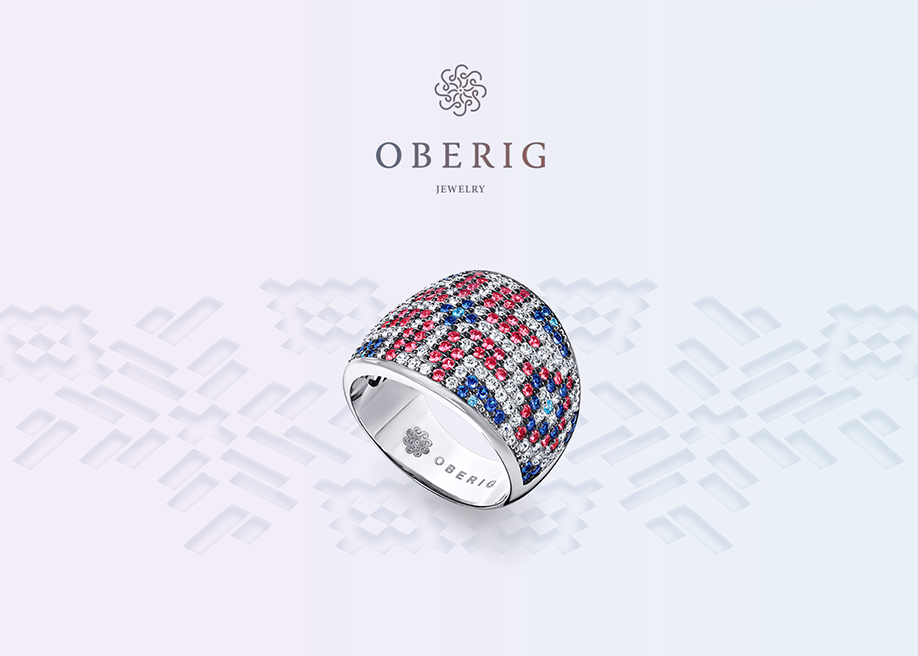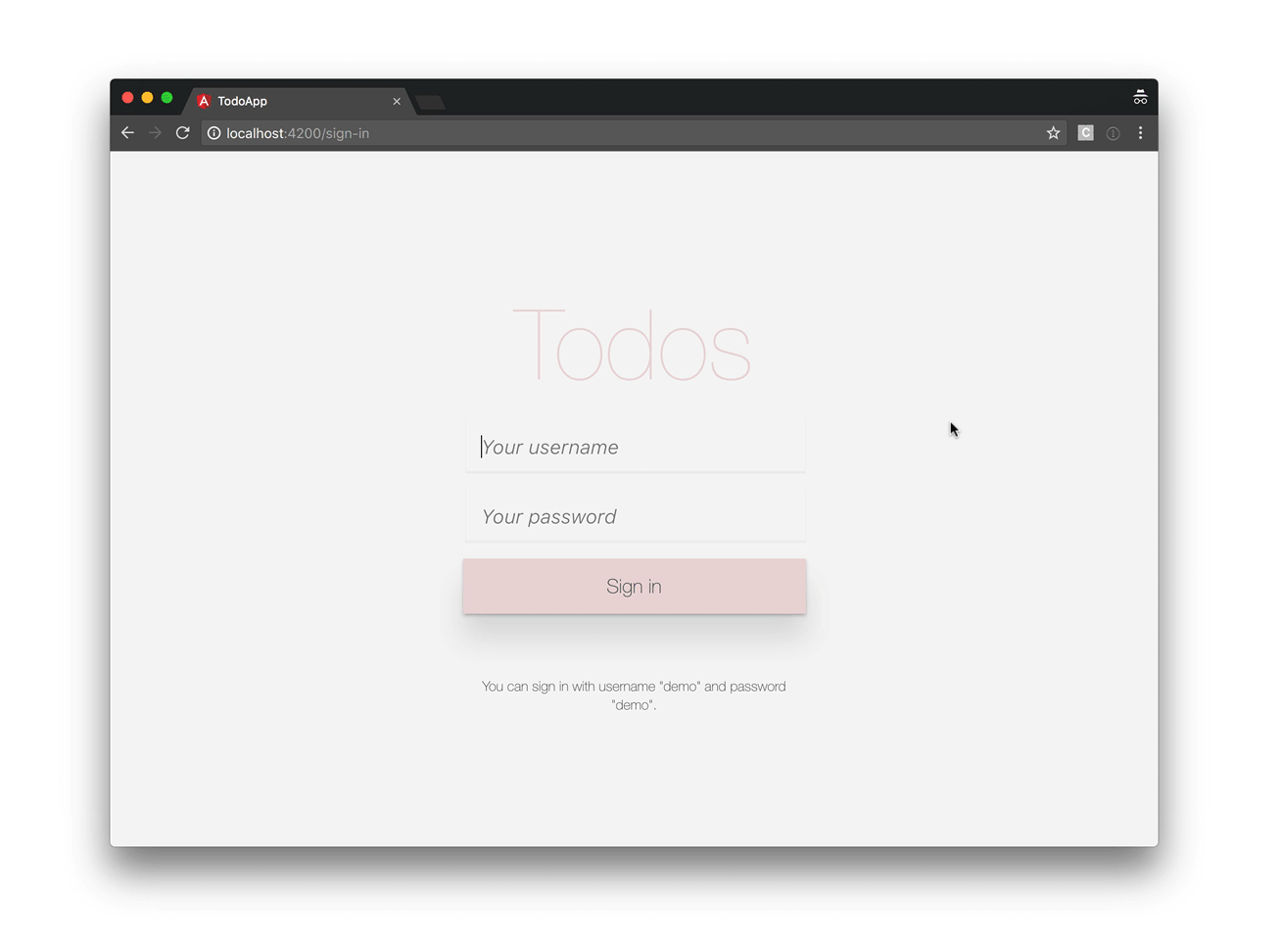[ This is a content summary only. Visit our website https://ift.tt/1b4YgHQ for full links, other content, and more! ]
by Irfan Ahmad via Digital Information World
"Mr Branding" is a blog based on RSS for everything related to website branding and website design, it collects its posts from many sites in order to facilitate the updating to the latest technology.
To suggest any source, please contact me: Taha.baba@consultant.com
Long-scrolling One Pager for Meeting Models – a new service substituting your team with more attractive people for that important new client meeting or VC pitch.


Welcome to this week’s edition of the Social Media Marketing Talk Show, a news show for marketers who want to stay on the leading edge of social media. On this week’s Social Media Marketing Talk Show, we explore Facebook’s New subscription service for creators and pausing Messenger chatbots with Luria Petrucci, Facebook privacy updates, and [...]
This post Facebook New Subscription Service for Creators and Pausing Messenger Chatbots first appeared on Social Media Examiner.
|
In the previous tutorial, you learned how to create an image editor using CamanJS which can apply basic filters like contrast, brightness, and noise to an image. CamanJS also has some other built-in filters like Nostalgia, Pinhole, Sunrise, etc., which we applied directly to the image.
In this tutorial, we will cover some more advanced features of the library like Layers, Blend Modes, and Events.
In the first tutorial, we only worked with a single layer which contained our image. All the filters that we applied only manipulated that main layer. CamanJS allows you to create multiple layers to enable you to edit your images in a more sophisticated manner. You can create nested layers, but they will always be applied on their parent layer like a stack.
Whenever you create a new layer and apply it on the parent layer, the default blend mode used will be normal. You can create a new layer on the canvas using the newLayer() method. When you create a new layer, you can also pass a callback function which will be useful if you intend to manipulate layer.
This function can be used for a lot of tasks like setting the blend mode for the new layer using the setBlendingMode() method. Similarly, you can control the opacity of the new layer using the opacity() method.
Any new layer that you create can be filled with a solid color using the fillColor() method. You can also copy the contents of the parent layer to the new layer using the copyParent() method. All the filters that we learned about in the previous tutorial can also be applied on the new layer that we are creating. For example, you can increase the brightness of the newly created layer by using this.filter.brightness(10).
Instead of copying the parent or filling the layer with a solid color, you also have the option to load any other image in the layer and overlay it on the parent. Just like the main image, you will be able to apply different filters to the overlaid image as well.
In the following code snippet, we have attached a click event handler to three buttons which will fill the new layer with a solid color, the parent layer, and an overlay image respectively.
$('#orange-btn').on('click', function (e) {
Caman("#canvas", function () {
this.newLayer(function () {
this.opacity(50);
this.fillColor('#ff9900');
});
this.render();
});
});
$('#parent-btn').on('click', function (e) {
Caman("#canvas", function () {
this.newLayer(function () {
this.opacity(50);
this.copyParent();
this.filter.brightness(20);
});
this.render();
});
});
$('#overlay-btn').on('click', function (e) {
var oImg = new Image();
oImg.src = "trees.png";
Caman("#canvas", function () {
this.newLayer(function () {
this.opacity(50);
this.overlayImage(oImg);
this.filter.brightness(20);
});
this.render();
});
});
In the previous section, we kept the opacity of any new layer that we added to the canvas below 100. This was done because the new layer would otherwise hide the old layer completely. When you place one layer over another, CamanJS allows you to specify a blend mode which determines the final outcome after the placement. The blend mode is set to normal by default.
This means that any new layer that you add on the canvas will make the layer below it invisible. The library has ten blend modes in total. These are normal, multiply, screen, overlay, difference, addition, exclusion, softLight, exclusion, and darken.
As I mentioned earlier, the normal blend mode sets the final color to be equal to the color of the new layer. The multiply blend mode determines the final color of a pixel by multiplying the individual channels together and then dividing the result by 255. The difference and addition blend modes work in a similar manner, but they subtract and add the channels.
The darken blend mode sets the final color of a pixel to be equal to the lowest value of individual color channels. The lighten blend mode sets the final color of a pixel to be equal to the highest value of individual color channels. The exclusion blend mode is somewhat similar to difference, but it sets the contrast to a lower value. In the case of the screen blend mode, the final color is obtained by inverting the colors of each layer, multiplying them, and then again inverting the result.
The overlay blend mode acts like multiply if the bottom color is darker, and it acts like screen if the bottom color is lighter.
If you want the colors in different layers to interact in a different manner, CamanJS also lets you define your own blend modes. We will cover this in the next tutorial of the series.
Here is the JavaScript code to apply different blend modes on an image:
$('#multiply-btn').on('click', function (e) {
hexColor = $("#hex-color").val();
Caman("#canvas", function () {
this.revert(false);
this.newLayer(function () {
this.fillColor(hexColor);
this.setBlendingMode('multiply');
});
this.render();
});
});
$('#screen-btn').on('click', function (e) {
hexColor = $("#hex-color").val();
Caman("#canvas", function () {
this.revert(false);
this.newLayer(function () {
this.fillColor(hexColor);
this.setBlendingMode('screen');
});
this.render();
});
});
In the above code snippet, we get the Hex color value from an input field. This color is then applied on the new layer. You can write the code to apply other blend modes in a similar manner.
Try to specify a color of your choice in the input field, and then apply any of the blend modes by clicking on the respective button. I have applied the blend modes on a solid color in the example, but you can also apply them on an overlaid image from the previous section.
If you uploaded any large image in either the demo of the first tutorial or the second tutorial, you might have noticed that the result of any applied filter or blend mode became evident after a long time.
Large images have a lot of pixels, and calculating the final value of different channels for each pixel after applying a specific blend mode can be very time-consuming. For example, when applying the multiply blend mode on an image with dimensions 1920*1080, the device will have to perform multiplication and division over 6 million times.
In such cases, you can use events to give users some indication about the progress of a filter or blend mode. CamanJS has five different events which can be used to execute specific callback functions at different stages. These five events are processStart, processComplete, renderFinished, blockStarted, and blockFinished.
The processStart and processComplete events are triggered after a single filter starts or finishes its rendering process. When all the filters that you specified have been applied on an image, the library fires the renderFinished event.
CamanJS divides large images into blocks before starting to manipulate them. The blockStarted and blockFinished events are fired after individual blocks of the image have been processed by the library.
In our example, we will only be using the processStart and renderFinished events to inform users about the progress of our image editing operation.
Caman.Event.listen("processStart", function (process) {
$(".process-message").text('Applying ' + process.name);
});
Caman.Event.listen("renderFinished", function () {
$(".process-message").text("Done!");
});
With the processStart and processFinish events, you get access to the name of the process currently operating on the image. The blockStarted and blockFinished events, on the other hand, give you access to information like the total number of blocks, the current block being processed, and the number of finished blocks.
Try clicking on any button in the demo below, and you will see the name of the process currently manipulating the image in the area below the canvas.
The first tutorial of the series showed you how to create a basic image editor with built-in filters from the CamanJS library. This tutorial showed you how to work with more than one layer and apply different filters and blend modes to each layer individually.
Since the image editing process can take a while for large images, we also learned how to indicate to users that the image editor is actually processing the image and not sitting idle.
In the next and final tutorial of the series, you will learn how to create your own blend modes and filters in CamanJS. If you have any questions related to this tutorial, feel free to let me know in the comments.

Do you want more clients? Wondering if LinkedIn can help you acquire more business? To explore how to use LinkedIn to find leads and turn them into customers, I interview John Nemo. More About This Show The Social Media Marketing podcast is an on-demand talk radio show from Social Media Examiner. It’s designed to help [...]
This post LinkedIn Prospecting: How to Find and Connect With Future Customers first appeared on Social Media Examiner.

This week in Yo! I cover Lunacy – a Sketch editor for Windows, 2018 State of Email by Litmus, Local Overrides in Chrome 65 DevTools, Paste with Frames by FiftyThree, 300 free icons, beautiful websites, remote jobs, beats & more 
A tutorialabout Google’s coding standards for source code in the JavaScript programming language. The best stylistic practices for writing clean, understandable code.
Neat load transitions in this colorful Landing Page for new blogging platform, Caramella. Quick shout-out to the smart use of the .la domain extension 
This article was originally published on Monday.com. Thank you for supporting the partners who make SitePoint possible.

9 out of 10 startups fail. This apocryphal statistic is generally accepted as fact because the simple truth is, building a successful business is hard.
There are many obvious factors that have contributed to monday.com’s success as a product and business—hard work, luck, determination—but much of where we’ve arrived today is thanks to the less obvious lessons that our founders learned the hard way.
When launching a new business and looking for a product/market fit, many people ask questions like:
This is a good start, but it’s not close to enough. In this post, we’ll share some of our co-founders Roy Man and Eran Zinman’s hard-earned insights on how they built a strong business. They’ve both been developing and building products since they were kids and have a lot of successes and failures under their belt.
Roy: “I built two startups that succeeded in some aspects but failed to turn into viable businesses. They were really good looking products with an excellent code base, but that didn’t help. It also didn’t help that people who saw these products were amazed and loved them—something didn’t work and I had no idea what.
So I went to my good friend and mentor Avishai Abrahami, the CEO of Wix, and told him that he had to show me how to get it right. So I joined Wix in 2010 when they were a startup of 80 people.”
Eran: “After I got my degree, I started my own company building a search engine for user reviews, where you could get an aggregated view of all reviews. I rented 15 computers that crawled the web 24/7 and put them on the second floor of my mom’s house. I got a call from our Internet provider who were like, ‘Uh, what are you doing?’
“I made every mistake you can make as an entrepreneur. I thought that you have to build an excellent product before you raise money. We kept improving it and perfecting it for a whole year while I burned through my life’s savings. Finally, my account was frozen, and I had to call it quits.
Working with your intuition is always wrong. You look at other companies and success stories and try to reverse-engineer them. It’s never like that. I thought, ‘I’m going to create the next Google. When I launch, it’s going to be perfect.’ I had no idea that I should have shared it with users and gotten feedback really early on.”
Roy: “When I joined Wix, I couldn’t believe how bad their codebase was. Their product design was pretty childlike, and the UI was horrible. Nothing acted like anything you’d expect. The Head of Product back then was proud of the fact that their ‘color picker’ was designed by a color-blind person.
Continue reading %The Secret Sauce for Creating an Amazing Product%

Nice use of canvas with this one page website for Coldnoir – a Chinese design/UX agency. Love the simplicity and feel of it as you scroll. Nicely built.
Coldnoir is a Web design / UX agency for designers inspire.
The post Coldnoir appeared first on One Page Mania.
In this article, we’ll add authentication to our Angular application and learn how we can protect sections from our application from unauthorized access.
This article is part 5 of the SitePoint Angular 2+ Tutorial on how to create a CRUD App with the Angular CLI.
In part 1 we learned how to get our Todo application up and running and deploy it to GitHub pages. This worked just fine but, unfortunately, the whole app was crammed into a single component.
In part 2 we examined a more modular component architecture and learned how to break this single component into a structured tree of smaller components that are easier to understand, reuse and maintain.
In part 3 we updated our application to communicate with a REST API backend using RxJS and Angular’s HTTP service.
In part 4, we introduced Angular Router and learned how the router updates our application when the browser URL changes and how we can use the router to resolve data from our backend API.
Don’t worry! You don’t need to have followed part 1, 2, 3 or 4 of this tutorial, for five to make sense. You can simply grab a copy of our repo, check out the code from part 4, and use that as a starting point. This is explained in more detail below.
Make sure you have the latest version of the Angular CLI installed. If you don’t, you can install it with the following command:
npm install -g @angular/cli@latest
If you need to remove a previous version of the Angular CLI, you can run this:
npm uninstall -g @angular/cli angular-cli
npm cache clean
npm install -g @angular/cli@latest
After that, you’ll need a copy of the code from part 4. This is available at https://github.com/sitepoint-editors/angular-todo-app. Each article in this series has a corresponding tag in the repository so you can switch back and forth between the different states of the application.
The code that we ended with in part 4 and that we start with in this article is tagged as part-4. The code that we end this article with is tagged as part-5.
You can think of tags like an alias to a specific commit id. You can switch between them using git checkout. You can read more on that here.
So, to get up and running (with the latest version of the Angular CLI installed) we would do this:
git clone git@github.com:sitepoint-editors/angular-todo-app.git
cd angular-todo-app
git checkout part-4
npm install
ng serve
Then visit http://localhost:4200/. If all’s well, you should see the working Todo app.
In this article, we will:
ApiServiceSignInComponent to display a sign-in formBy the end of this article, you’ll understand:
AuthService to implement authentication logicSessionService to store session dataOur application will look like this:

So, let’s get started!
Server-side web applications typically handle user sessions on the server. They store session details on the server and send the session ID to the browser via a cookie. The browser stores the cookie and automatically sends it to the server with every request. The server then grabs the session ID from the cookie and looks up the corresponding session details from its internal storage (memory, database, etc). The session details remain on the server and are not available in the client.
In contrast, client-side web applications, such as Angular applications, typically manage user sessions in the client. The session data is stored in the client and sent to server when needed. A standardized way to store sessions in the client are JSON Web Tokens, also called JWT tokens. If you’re unfamiliar with how tokens work, check out this simple metaphor to easily understand and remember how token-based authentication works and you’ll never forget again.
If you want to get a deeper understanding of cookies and tokens, make sure to check out Philippe De Ryck’s talk on Cookies versus tokens: a paradoxial choice.
Due to the popularity of JSON Web Tokens in today’s ecosystem, we’ll use a JWT-based authentication strategy.
Before we can add authentication to our Angular application, we need a back end to authenticate against.
In the previous parts of this series, we use json-server to serve back end data based on the db.json file in the root of our project.
Luckily, json-server can also be loaded as a node module, allowing us to add custom request handlers.
Let’s start by installing the body-parser npm module, which we’ll need to parse the JSON in our HTTP requests:
$ npm install --save body-parser
Next, we create a new file json-server.js in the root of our project:
const jsonServer = require('json-server');
const server = jsonServer.create();
const router = jsonServer.router('db.json');
const middlewares = jsonServer.defaults();
const bodyParser = require('body-parser');
// Sample JWT token for demo purposes
const jwtToken = 'eyJhbGciOiJIUzI1NiIsInR5cCI6IkpXVCJ9.eyJuYW1lIjoiU2l0ZVBvaW50IFJ' +
'lYWRlciJ9.sS4aPcmnYfm3PQlTtH14az9CGjWkjnsDyG_1ats4yYg';
// Use default middlewares (CORS, static, etc)
server.use(middlewares);
// Make sure JSON bodies are parsed correctly
server.use(bodyParser.json());
// Handle sign-in requests
server.post('/sign-in', (req, res) => {
const username = req.body.username;
const password = req.body.password;
if(username === 'demo' && password === 'demo') {
res.json({
name: 'SitePoint Reader',
token: jwtToken
});
}
res.send(422, 'Invalid username and password');
});
// Protect other routes
server.use((req, res, next) => {
if (isAuthorized(req)) {
console.log('Access granted');
next();
} else {
console.log('Access denied, invalid JWT');
res.sendStatus(401);
}
});
// API routes
server.use(router);
// Start server
server.listen(3000, () => {
console.log('JSON Server is running');
});
// Check whether request is allowed
function isAuthorized(req) {
let bearer = req.get('Authorization');
if (bearer === 'Bearer ' + jwtToken) {
return true;
}
return false;
}
This article is not meant to be a tutorial on json-server, but let’s quickly have a look at what’s happening.
First we import all json-server machinery:
const jsonServer = require('json-server');
const server = jsonServer.create();
const router = jsonServer.router('db.json');
const middlewares = jsonServer.defaults();
const bodyParser = require('body-parser');
In a real-world application, we would dynamically generate a JWT token when a user authenticates, but for the purpose of this demo, we define a JWT token statically:
// Sample JWT token for demo purposes
const jwtToken = 'eyJhbGciOiJIUzI1NiIsInR5cCI6IkpXVCJ9.eyJuYW1lIjoiU2l0ZVBvaW50IFJ' +
'lYWRlciJ9.sS4aPcmnYfm3PQlTtH14az9CGjWkjnsDyG_1ats4yYg';
Next, we configure json-server to run its own default middlewares:
// Use default middlewares (CORS, static, etc)
server.use(middlewares);
and to parse incoming JSON requests properly:
// Make sure JSON bodies are parsed correctly
server.use(bodyParser.json());
Json-server’s default middlewares are request handler functions that deal with static files, CORS, etc. For more detailed information, check out the documentation.
We then define a request handler for sign-in requests:
// Handle sign-in requests
server.post('/sign-in', (req, res) => {
const username = req.body.username;
const password = req.body.password;
if(username === 'demo' && password === 'demo') {
res.json({
name: 'SitePoint Reader',
token: jwtToken
});
}
res.send(422, 'Invalid username and password');
});
We tell json-server to listen for HTTP POST requests on /sign-in. If the request contains a username field with a value of demo and password field with a value of demo, we return an object with the JWT token. If not, we send an HTTP 422 response to indicate that the username and password are invalid.
In addition, we also tell json-server to authorize all other requests:
// Protect other routes
server.use((req, res, next) => {
if (isAuthorized(req)) {
console.log('Access granted');
next();
} else {
console.log('Access denied, invalid JWT');
res.sendStatus(401);
}
});
// Check whether request is allowed
function isAuthorized(req) {
let bearer = req.get('Authorization');
if (bearer === 'Bearer ' + jwtToken) {
return true;
}
return false;
}
If the client’s HTTP request contains an Authorization header with the JWT token, we grant access. If not, we deny access and send an HTTP 401 response.
Finally, we tell json-server to load the API routes from db.json and start the server:
// API routes
server.use(router);
// Start server
server.listen(3000, () => {
console.log('JSON Server is running');
});
To start our new back end, we run:
$ node json-server.js
For our convenience, let’s update the json-server script in package.json:
"json-server": "node json-server.js"
Now we can run:
$ npm run json-server
> todo-app@0.0.0 json-server /Users/jvandemo/Projects/sitepoint-editors/angular-todo-app
> node json-server.js
JSON Server is running
And voila, we have our own API server with authentication running.
Time to dig into the Angular side.
Now that we have an API endpoint to authenticate against, let’s add a new method to our ApiService to perform an authentication request:
@Injectable()
export class ApiService {
constructor(
private http: Http
) {
}
public signIn(username: string, password: string) {
return this.http
.post(API_URL + '/sign-in', {
username,
password
})
.map(response => response.json())
.catch(this.handleError);
}
// ...
}
When called, the signIn() method performs an HTTP POST request to our new /sign-in API endpoint, including the username and password in the request body.
If you’re not familiar with Angular’s built-in HTTP service, make sure to read Part 3 — Update the Todo service to communicate with a REST API.
Continue reading %Angular 2 Authentication: Protecting Private Content%